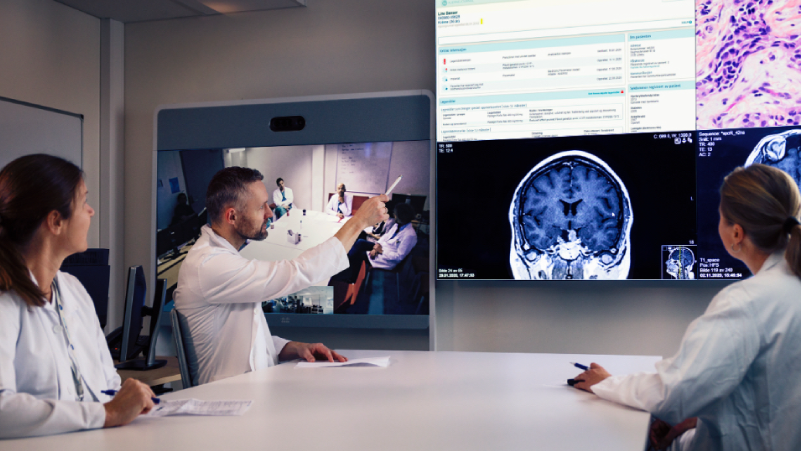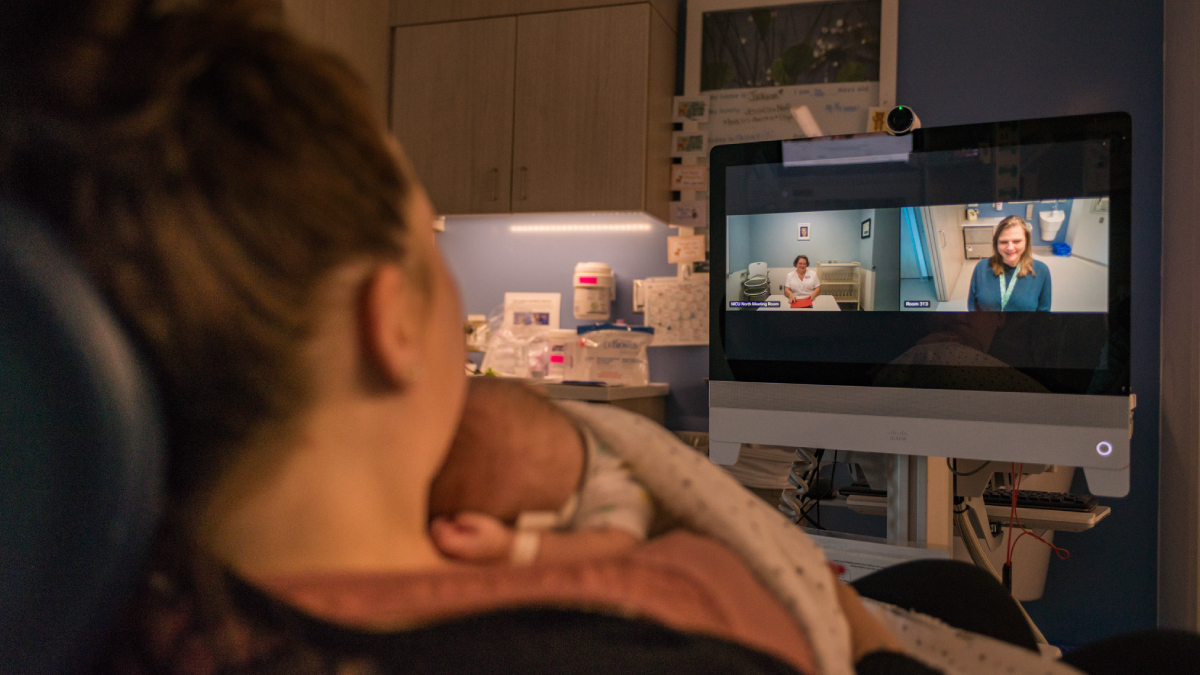From networking and security to telehealth and 3D holograms, Cisco is helping to transform the healthcare industry.
At a recent healthcare press engagement, Cisco explored just how far we’ve come — and what new technologies promise in the coming years for healthcare. It’s an area in which Cisco has a long tradition of trusted partnerships and innovation.
“Cisco has invested in innovation with a global perspective,” said Troy Yoder, Cisco’s global healthcare innovation leader. “We work with 17,000 different healthcare organizations. And we focus on a broad set of capabilities that deliver outcomes. It’s not just across our networking portfolio, but it’s across collaboration, security, and all the solutions that really improve quality of patient care.”
Cisco provides an immersive secure healthcare experience exploring how digital front door technology and the smart hospital of the future is transforming both patient experience and clinician experience. And as the pandemic has shown, digital connectivity — and Cisco — will continue to be a critical part of medical care.
“For the past 20 years, we’ve built a foundation on healthcare innovation,” Yoder added, “across all the different portfolios. And if we look at the last couple of years, we’ve really helped our healthcare organizations maintain that quality patient care. Because healthcare changed overnight from in-person to a call, a click, and a chat, Cisco’s digital front door really was a critical tool that helped to keep healthcare moving.”
Of course, in an environment in which sensitive medical data is being shared, privacy and security are critical.
“When we talk about innovation,” said Yoder, “we start with security. We talk about how we can deliver the experience that we need to while still making sure that it's secure. Security is built in.”
But as Kathryn Howe, Cisco’s Americas healthcare digital transformation director, stressed, there is no shortage of challenges remaining. And she outlined some key imperatives for technology to apply solutions. These ranged from patient equity and healthcare access to determining risk factors among populations and streamlining workloads to reduce moral injury, previously called burnout, among healthcare workers.
Howe then explained the importance of making the right investments, towards a future-proof infrastructure that will meet the demands of the present and beyond.
“Every dollar they spend, every initiative they take on must somehow improve the health of the population and the individual seeking care,” Howe said. “And at Cisco, we align to that, and our approach is really an end-to-end digital ready infrastructure for digital healthcare of the future.”
Howe then mentioned two customers that initiated cutting-edge solutions. In Norway, Oslo University Hospital used a Cisco Webex Multi-Content solution to cut care- plan waiting times for cancer patients from seven weeks to one week.
“They partnered with Cisco to create what’s called multidisciplinary meeting rooms,” she explained. “These are clinical consults where experts from any location come together to review a case and using our collaboration foundation, they’re able to collate and create an environment that reaches experts all over the country. And they can review a cancer case by looking at a high-fidelity image with low latency. So, everybody's seeing the same thing at the same time to get a conclusion.”
In the United States, Adventist Health streamlined its access and processing of data, to speed patient onboarding, diagnosis, and treatment.
“Adventist Health created a seamless, mobile and secure environment,” Howe continued. “So that people could come in and immediately be connected and authenticated, and clinicians could have access to that patient’s data right as they needed it. And they were able to really improve clinicians’ productivity, offload their burden, and, of course, impact their patient experience.”
Hyper-real connections for remote experts
Webex Expert on Demand was another technology explored in the roundtable. With its high-resolution, low-latency video imagery, it enables specialists to, in effect, “see what I see” — that is, interact with a patient or other experts who are all-but seeing through the same eyes, enabling a whole new level of real-time collaboration (and healing). It also empowers specialists to get data on demand, thereby streamlining everything from patient onboarding to diagnosis and treatment. And it brings a new dimension to training, enabling medical students to gain the most realistic experience possible.
“Care delivery has evolved,” explained Kedar Ganta, global director, growth verticals for Cisco collaboration. “In Honduras, for example, where access to care is limited, they can connect to a specialist in the U.S. So, they are treating the patient where they literally have no care. And this goes beyond simply using an iPhone and taking a picture and sharing it. It gives a specialist the overall picture to define and deliver a complete picture.”
Ganta went on to explain how Expert on Demand is also transforming medical teaching, with students and specialists interacting in real time from virtually anywhere in the world, and with detailed, high-resolution imagery.
But what about the next step in medical technology? Taking Expert on Demand to an even higher level is Webex Hologram, with its hyper-real interactive dimension. This was demonstrated to some guests who were given 3D-headsets to wear. They experienced first-hand how a medical specialist could gain a highly detailed sense of a patient’s condition, behavior, mobility, etc. Beyond that, other use cases, such as sharing and collaborating during the design phase of a medical-device manufacture, or detailed 3D training sessions were explored.
“Care teams could continually collaborate with detailed information that’s shared in real time, that’s contextual and available to see what others see,” Yoder concluded. “With this 3D headset, you are truly having a shared experience and whether that be training, whether it’s using a medical device for the first time and connecting with the device manufacturer’s experts, there's a lot that we can do when we kind of put all these experiences together and we let technology bring us all the contextual information to make it a better for all the participants.”
###



